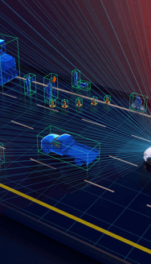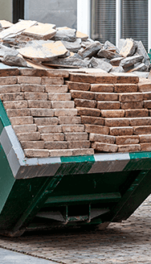Linear encoders: measuring displacements or movements
Which technology is best?
Four main technological solutions are used for linear encoders: optical, inductive, magnetic and capacitive. The way they work is essentially the same. A transmitter sends a signal or a field to a scale with a repeating pattern that changes that signal. A receiver detects this change, and uses the sinusoidal variation to calculate how many steps on the scale have been passed.
Read more…Optical encoder
Optical encoders are popular. They use an LED or a laser as an emitter, and are ideal for the high-tech market. An etched stripe pattern reflects the light, then the receiver detects the variation in intensity. An LED encoder is cheaper than the laser version, but it does require a lens to converge the beam, so it is slightly larger. Optical encoders are very high resolution,
and can detect steps down to the nanometer. The encoders themselves are also very small. Modern versions the size of a microchip are available, about 6 by 6 millimeters. This makes them easy to integrate into your design, and offers plenty of potential in areas such as medical robotics. They are suitable for use in vacuums and insensitive to electromagnetic fields, but they are less resistant to contaminants such as dust and moisture. If the distance between the sensor and the scale varies considerably, it is also better to use a different method.
Inductive encoders
Inductive encoders use two coils and a scale with copper strips that affect the field of the transmitter coil. There is a limit to how accurately these strips can be placed, so these encoders are unable to achieve the same resolution as optical versions. However, an accuracy of a few micrometers is more than enough for many applications.
Inductive encoders are resistant to a greater variation in reading height and contamination, and are considerably cheaper than optical encoders. The transmitting and receiving coils are wound in opposite directions, making them insensitive to interference fields that may occur. For this reason, inductive encoders are an excellent option for measurements close to strong magnetic fields.
Magnetic encoders
The scale in a magnetic encoder consists of alternating north and south poles. The pitch, which is the basis of the accuracy, is relatively large, so these encoders are not particularly accurate, but are excellent at dealing with changes in motion. The accuracy of the movement over the scale is much less critical than with optical encoders, and even less so than with inductive encoders.
One disadvantage is that they need quite a bit of electronics, which makes them unsuitable for use in a vacuum where they are unable to dissipate heat and can end up burning out. As you may expect, magnetic encoders will also not work properly near permanent magnets or motors.
Capacitive encoders
A capacitive encoder uses the change in capacitance of a capacitor to measure displacement. The main elements of the capacitive sensor are usually arranged so that the capacitance changes as moving elements move relative to the stationary plates of the capacitor. On the one hand, capacitive encoders are good for high resolution and accurate position measurements in controlled environments. On the other hand, they are sensitive to contamination and changes in temperature or humidity. If condensation or electrostatic charge builds up on a capacitive encoder, the position measurements are virtually useless.
Featured linear encoders
Need some help?
Our brand-independent sensor database only lists a selection of the sensors available. There are so many different technologies and manufacturers that our online sensor database can never be 100% complete. If you can’t find what you’re looking for, or you have a question, send an e-mail to our sensor experts. We’ll gladly help you with your search.







